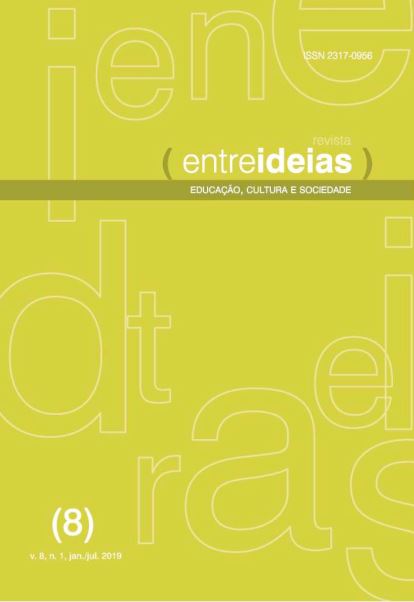Investigação sobre Cyberbullying, em Portugal e Europa – alguns programas, projetos e as percepções de estudantes, professores e pais
DOI:
https://doi.org/10.9771/re.v8i1.25178Palavras-chave:
Cyberbullying, TIC, projetos, Perceções estudantes, professores e paisResumo
O desenvolvimento das Tecnologias da Informação e da Comunicação (TIC) representa enormes vantagens para a gestão e conforto da vida do quotidiano, para a vida da escola e, de modo muito particular, para a vida das famílias e dos jovens. As crianças e jovens, que nascem neste ‘admirável mundo novo’, carecem, porém, de suporte que sustente o desenvolvimento de uma cidadania digital. De facto, hoje reconhece-se que a par destas vantagens há riscos importantes associados à utilização da Internet e das TIC – como é o caso do cybebullying! O cyberbullying um problema emergente nas nossas escolas e sociedade, carece de investigação e compreensão e divulgação junto de pais e professores que não conhecem e não sabem lidar com os novos perigos que hoje espreitam as crianças e os alunos Neste artigo referem-se diversos estudos em Portugal e na Europa. Mais concretamente apresenta-se, por um lado, o projeto Camouflage and safety in the virtual World, financiado pelo programa Erasmus+ 2015-1-PL01-KA201-016817, desenhado e implementado em conjunto com parceiros da Polónia (coordenação), Bulgária, Chipre e Grécia, Portugal e Turquia. Por outro lado, descreve-se um estudo, levado a cabo no âmbito do referido projeto, que visou conhecer a experiência sobre o cyberbullying de estudantes, professores e pais, nos diferentes países, através de um questionário construído para o efeito. O trabalho é enquadrado por uma leitura crítica e fundamentada na recente investigação, de alguns dados relevantes nesta área de investigação conducentes à compreensão do fenómeno de cyberbullyingDownloads
Referências
ARICAK, Osman Tolga, Psychiatric symptomatology as a predictor of cyberbullying among university students. Eurasian Journal of Educational Research, 34, p. 167-184. 2009.
BELSEY, Bill. Cyberbullying: An emerging threat to the “always on” generation. 2006. [Consultado em 14 de Outubro de 2010].
http://www.cyberbullying.ca/pdf/Cyberbullying_Article_by_Bill_Belsey.pdf
Del BARRIO, Cristina. Experiencias de acoso y ciberacoso: autores, autoras, victimas y consideraciones para la prevención. Convives, nº3, Revista Digital de la Asociación CONVIVES, Madril, Abril, 2013. p. 25-33. 2013.
HINDUJA, Sameer; PATCHIN, Justin. Bullying, cyberbullying, and suicide, Archives of Suicide Research, 14: 3, p. 206 — 221. 2010.
HOSTERMAN, K. Parent and principals’ perceptions of cyberbullying in 21st century rural elementary schools. Doctoral Study Submitted in Partial Fulfillment of the Requirements for the Degree of Doctor of Education. Walden University. Walden Dissertations and Doctoral Studies. 2016.
LI, Qing. Cyberbullying in high schools: a study of students’ behaviors and beliefs about this new phenomenon. Journal of Aggression, Maltreatment, and Trauma, 19(4), 372-392. 2010.
From http://new.csriu.org/cyberbully/docs/cbctpresentation.pdf
MATOS, Armanda; VIEIRA, Cristina; AMADO, João; PESSOA, Teresa, MARTINS, Maria-José. Cyberbullying in Portuguese schools: prevalence and characteristics. Journal of School Violence. 2016. doi: 10.1080/15388220.2016.1263796
MCGUCKIN, Connor; CROWLEY, Nial; LEWIS, Christopher. A cross-national perspective on cyberbullying among school pupils in Northern Ireland: a supplement to Mora-Merchan and Jäger (2011). Current Research Journal of Social Sciences 5(5): p. 168-176. 2013.
MORA-MERCHÁN, Joaquin; JÄGER, Thomas (Eds.). Cyberbullying. A cross-national comparison (p.131-145). Landau: Verlag Empirische Padagogik. 2010. Acessível em www.cybertraining-project.org
NATIONAL CRIME PREVENTION COUNCIL. Teens and cyberbullying: Executive summary of a report on research conducted for National Crime Prevention Council (NCPC). 2007.
NEWEY, Katrina; MAGSON, Natasha. A critical review of the current cyberbullying research: definitional, theoretical and methodological issues. Where do we go from here? Paper presented at AARE International Research in Education Conference, Melbourne, Australia. 2010.
Retrieved August 20, 2012, from http://www.aare.edu.au/10pap/2521NeweyMagson.pdf
ORTEGA, Rosario; ELIPE, Paz; & MORA-MERCHÁN, Joaquin; GENTA, Maria Luisa; BRIGHI, Antonella; SMITH, Peter; THOMPSON, Fran; TIPPETT, Neil. The emotional impact of bullying and cyberbullying on victims: a European cross-national study. Aggressive Behavior, 38, p. 342-356. 2012.
PARKS, Peggy. Cyber bullying. SanDiego: ReferencePointPress. 2013.
PESSOA, Teresa; AMADO, João. Cyberbullying - Questões e desafíos atuais. Edmetic, 3 (2), pp.29-51. 2014.
PESSOA, Teresa; MATOS, Armanda; AMADO, João; FREIRE, Isabel; CAETANO, Ana Paula. Cyberbullying entre adolescentes y jóvenes portugueses. Comunicación y Pedagogía, 297-298. p. 11-19. 2017.
SLONJE, Robert; SMITH, Peter. Cyberbullying: another main type of bullying? Scandinavian Journal of Psychology, 49, p.147-154. 2008.
SMITH, Peter; MAHDAVI, Jess; CARVALHO, Manuel; TIPPETT, Neil. An investigation into cyberbullying, its forms, awareness and impact, and the relationship between age and gender in cyberbullying. A Report to the Anti-Bullying Alliance. 2006. Retrieved July, 7 2010 from http://www.education.gov.uk/research/data/uploadfiles/RBX03-06.pdf
SMITH, Peter; MAHDAVI, Jess, CARVALHO, Manuel, FISHER, Sonja; RUSSELL, Shanett; TIPPETT, Neil. Cyberbullying, its forms and impact on secondary school pupils. Journal of Child Psychology and Psychiatry, 49, p. 376-385. 2008.
SNAKENBORG, John; VAN ACKER, Richard; GABLE, Robert. Cyberbullying: prevention and intervention to protect our children and youth. Preventing School Failure, 55(2), p. 88-95. 2011. doi:10.1080/1045988X.2011.539454.
YBARRA, Michele; MITCHELL, Kimberley. Online aggressor/ targets, aggressors, and targets: a comparison of associated youth characteristics. Journal of Child Psychology and Psychiatry 45:7 (2004), p. 1308–1316. 2004.
WILLARD, Nancy. I can´t see you – you can´t see me. How the use of information and communication technologies can impact responsible behavior. Center for Safe and Responsible Internet Use. 2004.
Retrieved June, 10 2007 fromhttp://new.csriu.org/cyberbully/docs/disinhibition.pdf
WILLARD, Nancy. Educator’s guide to cyberbullying and cyberthreats. 2005.
Retrieved August, 20 2007 from http://new.csriu.org/cyberbully/docs/cbcteducator.pdf
WILLARD, Nancy. Cyberbullying and cyberthreats. Effectively managing internet use risks in schools. 2006. Retrieved August, 20 2007

